Cooling system and backplate
Of course, the generated waste heat is directly related to the recorded power, for which the cooling solution is responsible for optimum dissipation. And this is precisely where we are faced with various compromises, which, on the one hand, reduce costs, but on the other hand work quite well, at least in part.
Gigabyte has black coated the backplate inside, so that the radiated heat is better absorbed and a heat build-up is counteracted. On the rear, the area below the package, as well as a few capacitors, are cooled by means of thermal pads. Since this is made of aluminium and also slightly thin, the missing thickness has been compensated by profile embossing, which in addition to the better stiffness also makes something visually.
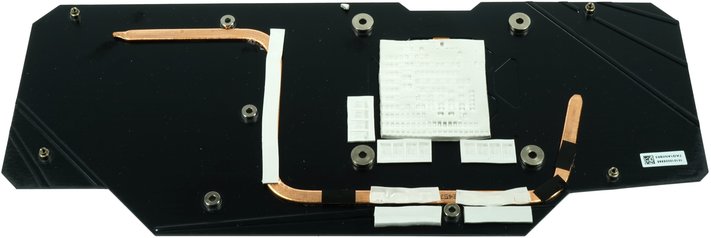
We already know that Gigabyte, as with the RX Vega56 Gaming OC, which has already been tested, has transported some of the voltage converters to the back of the board. In addition, a flat-pressed heatpipe has been glued on, which is supposed to transfer the waste heat from half of the VRM directly to more remote areas of the backplate. The rest is cooled directly by means of a pad. The whole thing is a bit tricky and in the end it just goes.
| Cooling system at a glance | |
|---|---|
| Type of cooler: | Air |
| GPU Cooling | DHT (Direct Heat Touch), aluminium heat sink |
| Cooling fins: | Aluminum, vertical alignment narrow, partly inclined |
| Heatpipes | 2x 8 mm and 3x 6 mm, copper composite |
| VRM cooling: | GPU and memory VRM via radiator frame |
| RAM cooling | Memory cooling (HBM2 modules) via the heatpipe |
| Fan: | 2x 9.5 cm fan modules (10 cm opening), 11 rotor blades semi-passive regulation |
| Backplate | Aluminum Cooling function with heatpipe and pads |
Now let's take a closer look at this cooler. In addition to the heat sinks for some of the voltage converters, two 8 mm heatpipes and three other 6 mm heatpipes made of composite material are responsible for transporting waste heat from the GPU to the individual areas of the slat cooler.
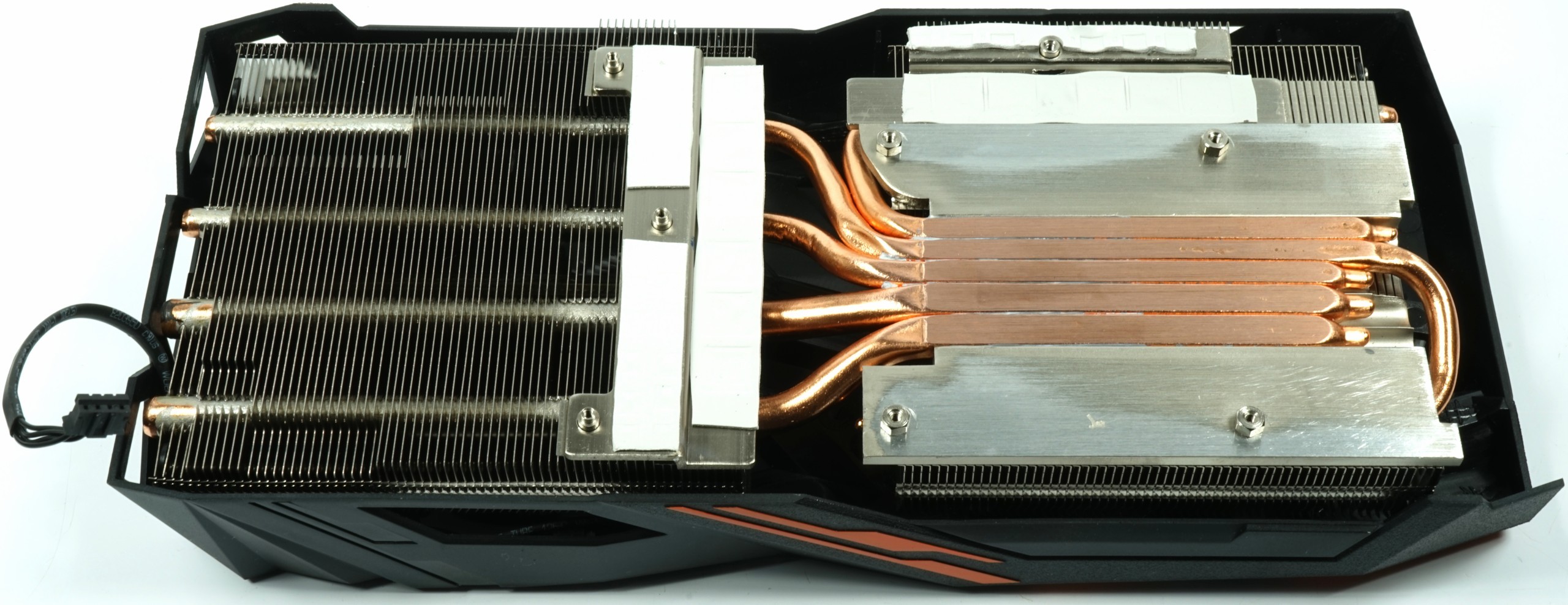
DHT can work if you only approach it intelligently enough. After many negative examples in the past, however, the projection shows that we have really done custom-made work here. The heatpipes have only been flattened to such an extent that a complete and also meaningful overlap results. This is due to the differences between the individual temperature ranges for GPU. Memory and hotspot only whole 2°C above the values of the really good vapor-chamber of Sapphire. You have to do that with a normal heat sink.
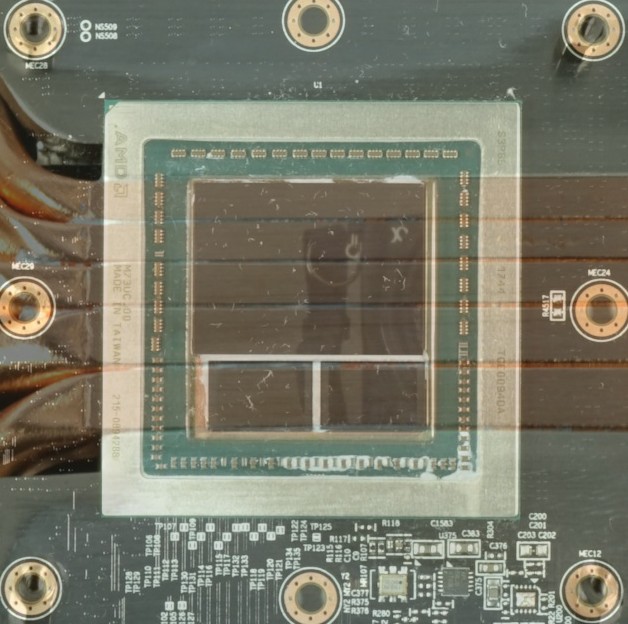
Fan curves and noise emission ("volume")
The semi-passive operation is done via a controller, so that even if this controller has already switched the fans without voltage, the VoltiMan still displays the rotation values. This is a bit tricky and confused if you only read out the sensor values, but with an external laser measuring device the reality comes to light. Also interesting is the curve curve, which ensures that the GPU does not shoot beyond the stored 75°C target temperature.
This is where Gigabyte AMD's fuzzy logic bends in terms of increasing fan speeds. After a period of very intensive cooling during the warm-up phase, the speeds decrease significantly later. However, gigabytes meant a tick too well when it came to noise avoidance on this small cooler, which is then reflected in the alternating speeds. Here one could have driven consistently higher speeds, because we already know that the components would have liked to have seen it.
We have of course pointed out this circumstance to Gigabyte and tested the card again in our hotbox. As a result, the manufacturer has increased the speeds by an average of 100 rpm in a new BIOS. Loeblich.
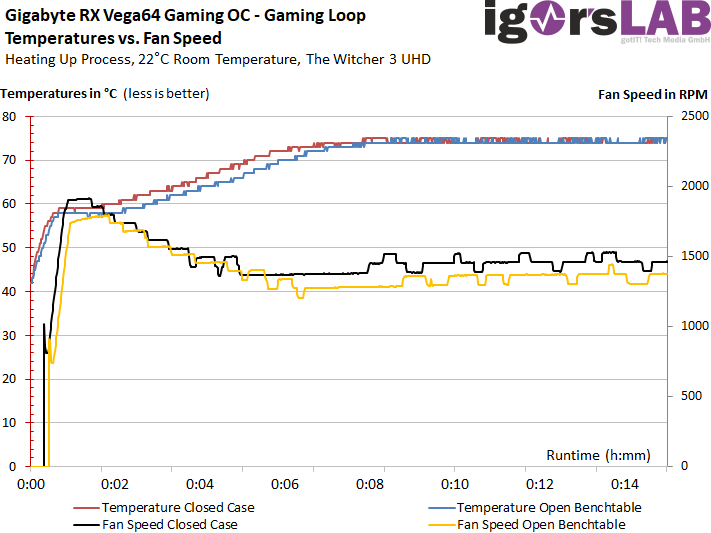
The whole thing doesn't look much different with the stress test. In summary, it can be said that the card with the two fans goes quite well, but also needs higher speeds to act worry-free. This, in turn, is now being created by the new BIOS.
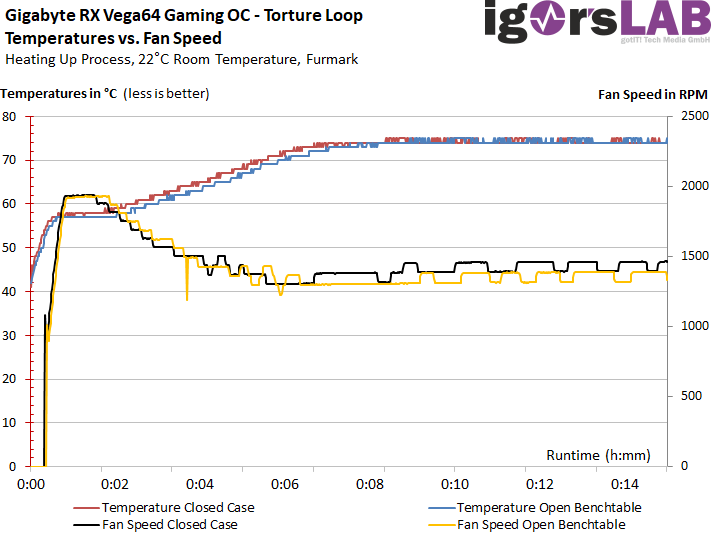
The card has no reserves to rotate the fans lower, on the contrary. Here, the volume has been optimized, which is also revealed by the table:
| Measurements for fans and noise emission |
|
|---|---|
| Fan speeds Open Benchtable Maximum |
1744 rpm (peak) |
| Fan speeds Open Benchtable Average |
1373 rpm (warmed up) 1463 rpm (warmed up, new BIOS) |
| Fan Speeds Closed Case Maximum | 1787 rpm (peak) |
| Fan Speeds Closed Case Average | 1433 rpm (warmed up) 1527 rpm (warmed up, new BIOS) |
| Noise Emission (Air) Range |
33.7 (minimum) to 41.4 dBA (short during warm-up) |
| Noise Emission (Air) Average |
36.6 dBA (warmed up) 37.8 dBA (new BIOS) |
| Noise Emission (Air) Idle | 0 dBA |
| Sound characteristic / Hearing impression |
low-frequency bearing noise light engine noise< 1 Hz moderate air/demolition noise hardly any voltage transformer noises |
To illustrate our subjective hearing impression once again, we now have a high-resolution graphic with the complete frequency spectrum of our laboratory measurement. One sees very nicely the alternating fan speeds and the resulting mean value as the sum of a measurement with a longer interval.
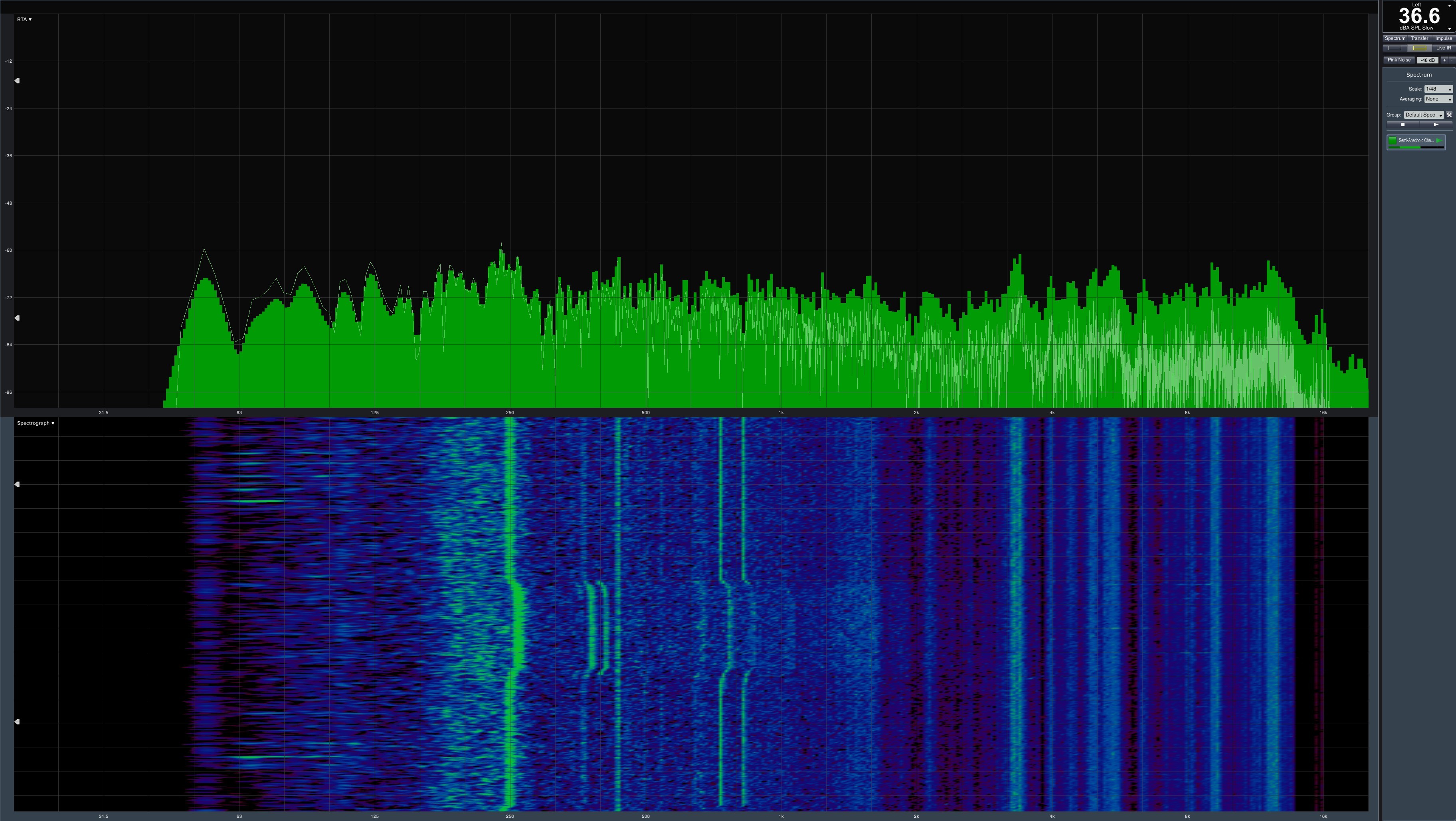
The 36.6 dB(A) is very good and more than acceptable for such a brutal map and the measured temperatures. They are almost too good and you would certainly have done a favor with a little higher, but constant speeds of the card and the customer. Before the BIOS update, this was just a little too much (or too little) of the good. After the update, it is still just under 38 dB(A), which is also absolutely acceptable.
















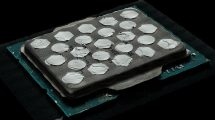
















Kommentieren